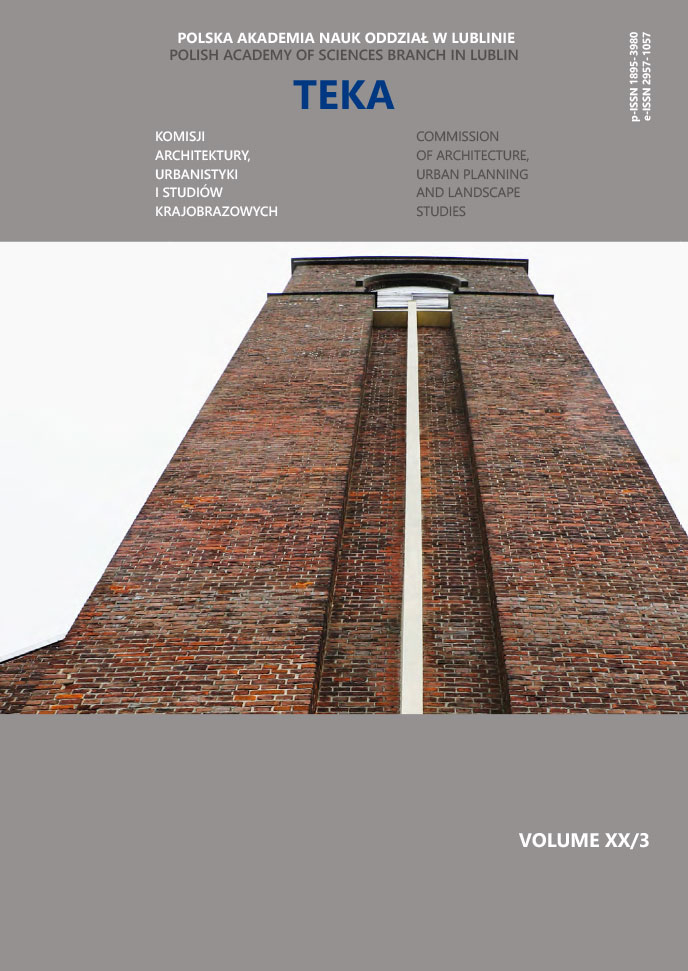Biologically active area in low-rise high-denisty housing development with an example of Bialystok
Wojciech Matys
w.matys@pb.edu.plDepartment of Environment Protection and Cultivation, Faculty of Civil and Environmental Engineering, Białystok University of Technology (Poland)
https://orcid.org/0000-0001-5542-8707
Abstract
The biologically active area is one of the most important elements of residential development. Its size is determined by the percentage factor established in local spatial development plans and laws regulations. The publication was set minimum values for this ratio for single-family and multi-family housing, and the outcomes were compared with a new type of housing, currently popular in Poland, low-rise high-density residential development. The studies were done on the example of the city of Bialystok, where there are many buildings of this new type of housing.
Supporting Agencies
Keywords:
low-rise high-density housing development, single-family housing, multi-family housing, biologically active area, the percentage ratioReferences
A collective work edited by Bieganska E., 1953: Arranging green areas (in Polish), State Technical Publisher, Warsaw
Google Scholar
A collective work edited by Zwolanowska B., 1970: Small urban dictionary (in Polish), Institute of town planning and architecture, Warsaw
Google Scholar
A collective work edited The Society of Polish Town Planners, 2003: Urban planner’s guide (in Polish), Warsaw
Google Scholar
Korzeniewski W., 1981: A guide to a housing designer (in Polish), Arkady, Warsaw
Google Scholar
Ptaszycka A., 1950: Green spaces in cities (in Polish), People’s Publishing Cooperative, Poznan
Google Scholar
Rozanski S., 1959: Construction of the town and its climate (in Polish), Arkady, Warsaw
Google Scholar
Saternus P., 2013: Lexicon of urban planning and spatial planning (in Polish), Bel Studio, Warsaw
Google Scholar
Seruga W., 1984: Conditions and criteria for forming low-rise high-intensive residential development (in Polish), Cracow University of Technology Publishing House, Krakow
Google Scholar
Tolwiński T., 1963: Town planning. Greenery in urban planning (in Polish), PWN, Warsaw
Google Scholar
Regulation of the Minister of Infrastructure of April 12, 2002, on the technical requirements to be met by buildings and their location (Journal of Laws No. 75, item 690) as amended (in Polish)
Google Scholar
Building Law Act of July 7, 1994 (Journal of Laws No. 89, item 414) as amended (in Polish)
Google Scholar
Spatial development plans of Bialystok (no. of plan – City Council Resolution no.): 8-LXIV/642/98, 58-XLVI/526/05, 59-XLVII/553/05, 60-XLVII/554/05, 66-LXI/747/06, 68-LXI/749/06, 69-LXI/751/06, 73-LXII/768/06, 74-LXII/769/06, 79-XII/110/07, 82-XXIX/330/08, 86-XXXIII/399/08, 93-LVI/724/10, 96-VI/36/11, 97-VI/37/11, 98-VII/53/11, 99-VII/54/11, 100-IX/72/11, 101-XI/81/11, 103-XII/95/11, 106-XVIII/176/11, 107-XXII/209/12, 109-XXIII/241/12, 112-XXIX/295/12, 118-XLVIII/540/13, 137-XXV/378/16, 139-XXVI/417/16, 142-XXVII/445/16, 146-XLI/622/17, 149-XLIX/747/18
Google Scholar
https://gisbialystok.pl
Google Scholar
https://www.geoportal.gov.pl
Google Scholar
Authors
Wojciech Matysw.matys@pb.edu.pl
Department of Environment Protection and Cultivation, Faculty of Civil and Environmental Engineering, Białystok University of Technology Poland
https://orcid.org/0000-0001-5542-8707
Statistics
Abstract views: 269PDF downloads: 164
License

This work is licensed under a Creative Commons Attribution-ShareAlike 4.0 International License.




